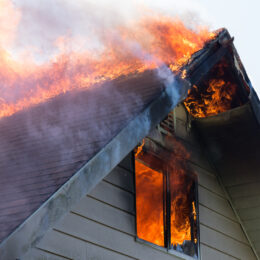
By Chris Adam
If you’re a homeowner with some type of security system, you’re in good company. According to SafeHome, about 72% of home decision-makers have some form of home security system.
How much are homeowners paying for their systems? According to CNN, systems cost about $490 on average. That ranges from $200 for a self-installed basic kit to $2,000 for sophisticated options.
As technology has advanced over the past several years, so have the options for smart home safety devices. The good news: some of these smart options may be much more affordable than you think.
“Smart home security systems can be wonderful additions to keep your loved ones and valuables safe,” said Jon Elkins, vice president for safety, training, and compliance of Indiana Electric Cooperatives. “They also can be easy targets for attackers if they’re not properly protected and updated regularly.”
Smart home security risks
It’s vital to ensure your smart home security systems are protected. That includes keeping up with product updates and using data encryption and two-factor authentication. If not, here are some of the main risks that come with unprotected smart home devices, according to NordVPN:
Data and identity theft: Unprotected smart home accessories can store sensitive data that hackers can steal.
Device hijacking:
An attacker can take over control of a smart device, use your security cameras, or break your smart locks.
Man-in-the-middle attacks: An attacker can intercept communication between two of your devices and can take control of them, and possibly install malware.
Distributed denial-of-service attacks: An attacker can overload your device with multiple fake requests.
Permanent denial-of-service attacks: An attacker can permanently damage your device to make it useless.
How can I keep my system safe from attackers?
Like other internet-connected devices, smart home security systems can be vulnerable to hackers and security breaches.
You can take steps to ensure your safety with these systems by keeping your devices updated and using security measures like data encryption and two-factor authentication. You should also:
Secure your Wi-Fi router: It should be password-protected with a strong level of encryption.
Be smart with your passwords: Make them challenging to figure out, and don’t reuse them.
Keep your devices up-to-date: Regularly check and install firmware updates to improve security.
Try to find devices with enhanced security features: Buy devices with these features and make sure
you enable them.
These actions can help keep your private information safe while keeping your home secure.
Chris Adam is a freelance writer from Lafayette. Information courtesy of USA Today



